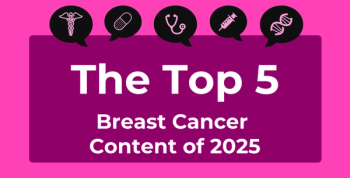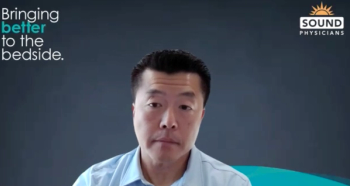
Dr Laura Crotty Alexander on the Interaction Between COVID-19, Vaping Diseases
It has been really tricky to identify and appropriately treat vaping-associated lung diseases in the time of COVID-19, said Laura Crotty Alexander, MD, ATSF.
Laura Crotty Alexander, an associate professor of medicine at the University of California, San Diego, discusses how vaping-associated lung diseases have interacted with the COVID-19 pandemic at this year's
Transcript:
Have there been reports of vaping diseases in the time of COVID-19? How have the 2 conditions interacted?
It has been really tricky to identify and thus appropriately treat vaping-associated lung diseases in the time of COVID-19 because they are so similar to a COVID-19 presentation. So the number one thing we've noticed is delayed diagnosis of people with e-cigarette or vaping product use-associated lung injury (EVALI) or other vaping-associated lung injuries. In general, people with these vaping-associated diseases get about 4 COVID-19 tests before physicians are convinced that they actually do have a vaping-associated disease. It becomes even more important that in the first H&P [history and physical assessment] and especially when a pulmonary critical care person is interviewing a patient to really take a good social history, including that of use of any inhalant. Instead of asking just about smoking, which a vaper of e-cigarettes would interpret as smoking of conventional tobacco, you must ask about use of any kind of inhalant including vaping of nicotine, vaping of THC. Now we have even more words to remember, because now there's dabbing, which is specific for the inhalant use of THC.
We began seeing vaping-related lung diseases as far back as 2008, 2012. Since they became more popular, from 2012 to now, we've seen more and more cases of health effects and particularly lung diseases caused by vaping. It's been really difficult to drill down on what are the chemicals in the aerosols that are causal. Which ones are causing the lipoid pneumonias, which ones are causing the acute eosinophilic pneumonias, which ones are causing the hypersensitivity pneumonias? So again, of all the lung diseases that are out there in the interstitial lung disease/inflammatory lung disease category, almost all of them have been associated with vaping use at this point.
I think as we're moving into a modern era of e-cigarette work, both on a clinical research and the bench side, the EVALI epidemic was helpful in showing that if you take samples from the airway of humans who have suffered a vaping-related lung injury, so if you bronch [perform a bronchoscopy] and do a BAL [bronchoalveolar] lavage, you can actually send that BAL for metabolomic studies to look specifically for the chemicals that are in those airways that shouldn't be there. I think by doing this, and by freely posting these metabolomic profiles and these inflammatory diseases caused by vaping, we might be able to identify some specific chemicals that are particularly toxic to the lungs.
This work has already been started because many people were bronched in the setting of EVALI and those samples were analyzed to identify vitamin E acetate as a primary driver. It's really nice to have these methods already in place, and be looking for these vaping-related lung diseases, so that we can try and get a little bit more specific on what we're looking for. As we create a list of chemicals that we believe are toxic or we prove are toxic, we can take them into mouse models and check to see if they cause a pattern of lung injury like we're seeing in humans. Again, that was done for vitamin E acetate and confirmed that it's directly cytotoxic. Finally, we can then take e-liquids from people suffering from lung injuries, and just look at the e-liquids for those chemical components. Instead of needing to do a bronch and a lavage in the person, we can take their liquid, look for this short list of chemicals that might be driving lung injury, and be able to confirm the diagnosis and specifically tell them why this is happening. So it's a very exciting time in e-cigarette research. I think we're going to make really huge strides in the coming years.
Newsletter
Stay ahead of policy, cost, and value—subscribe to AJMC for expert insights at the intersection of clinical care and health economics.









































